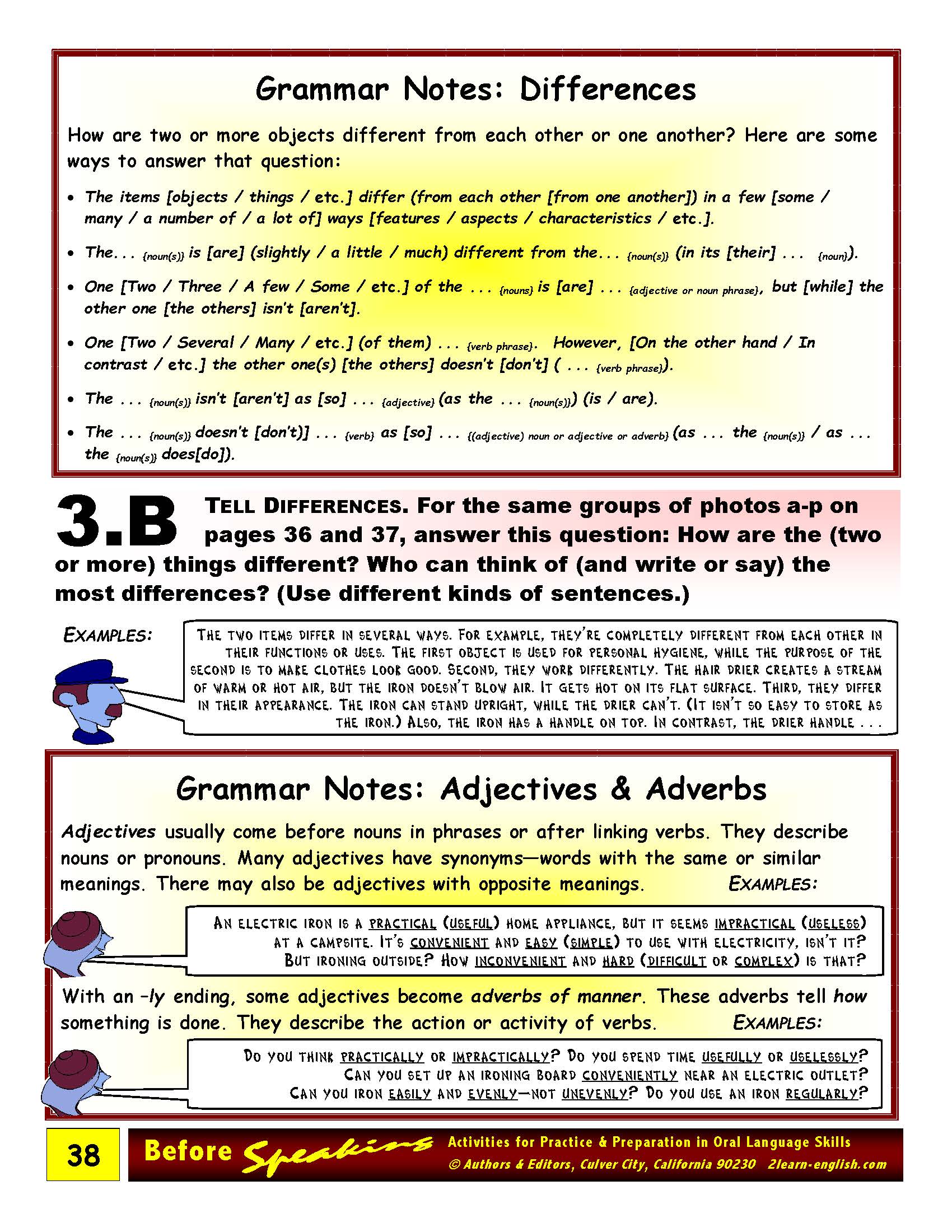1
/
of
6
Work/Life English
E-01.09 Use (Positive, Comparative, Superlative) Adjectives & Adverbs (to Tell Similarities & Differences)
E-01.09 Use (Positive, Comparative, Superlative) Adjectives & Adverbs (to Tell Similarities & Differences)
Regular price
$5.00 USD
Regular price
Sale price
$5.00 USD
Unit price
/
per
Before Speaking: Activities for Practice & Preparation in Oral Language Skills. Part One Talk About Things: 3: Compare Stuff, pages 35-50 + 11 Answer-Key Pages with Suggested (Model) Responses to Activities, Games, & Mini-Speech Instructions
31 pages
Who It’s For: Language-Arts Teachers, Learners, & Helpers Continuing to “Talk About Things” by Making Comparisons Regarding (Un)Equal Features, Uniqueness, & Choices—All While Reviewing Contrasts in Vowel Sounds
Why It’s Useful: Other than Naming, Categorizing, Explaining, and Describing Items, what other Language Competencies might English learners be acquiring when they “Talk About Things?” For practical real-life purposes, as well as in enjoyable (competitive) Games of Comparison, in Sections 3.A through 3.D. text users will be Noting Identical Features or Similarities, Spotting Differences, Comparing Unequal Features, Explaining Choices, and Describing Uniqueness. Part One-3 ends with Mini-Speeches related to shopping and/or advertising. Suggested sample language from the Before Speaking Answer Key for Text Activities make the materials “self-instructional”—and/or even more effective in collaborative group activities.
What You’ll Do:
[1] Referring to Grammar & Vocabulary Notes on Identical Features / Similarities, Differences, Adjectives & Adverbs, follow Instructions 3.A & 3.B to compare pairs and groups of pictured items in Visuals a-p. With paired Advertising Montages a-1 vs. a-2 through m-1 vs. m-2, complete Activity 3.C by using structures with Comparatives & Superlatives. In 3-D, Explain Choices made on the bases of the text ads and beyond. Discuss your responses to “Cultural Questions about Advertising.”
[2] Language Notes: Uniqueness serve as preparation for the Logic or Reasoning Test / Game Items a-p that follow. Have fun with these. Create your own
[3] Peruse, perhaps reviewing pronunciation / grammar, the Summary Vocabulary Lists. Then, for challenge, practicality, and language development, follow steps for **3.E Give Mini-Speeches. Whenever they help with self-confidence, correctness, and/or linguistic effectiveness, you can refer to, follow, and/or learn from the many samples and models in excerpted and attached Before Speaking Answer Key pages 15-31.
Couldn't load pickup availability












